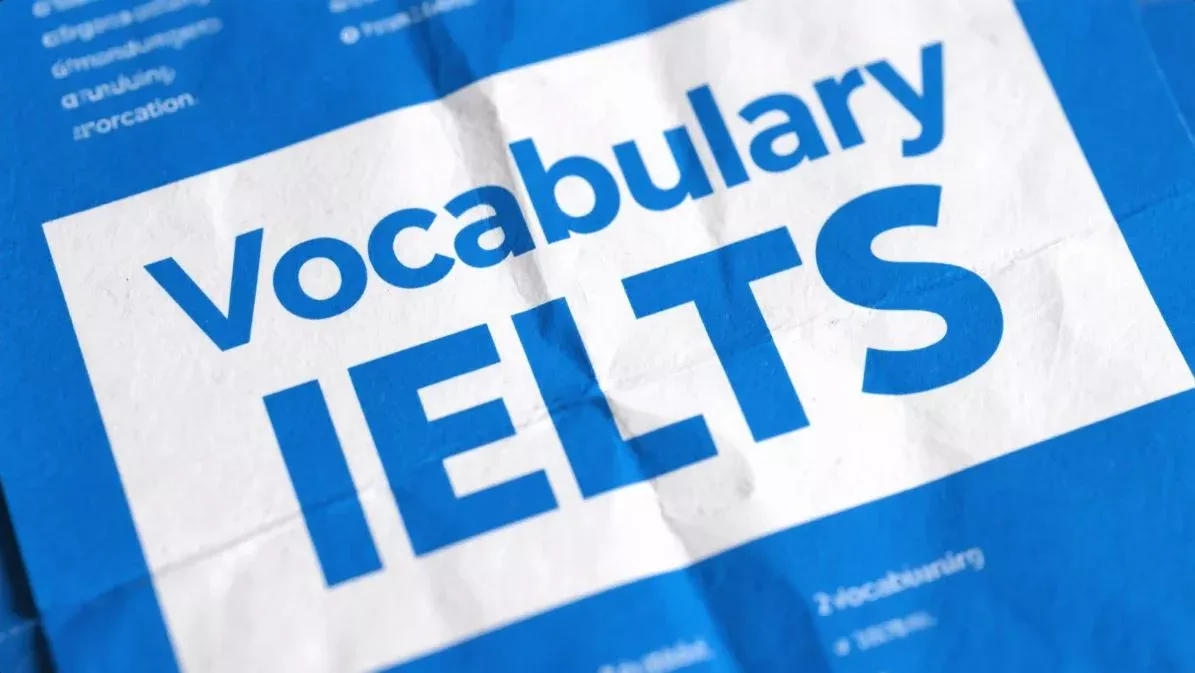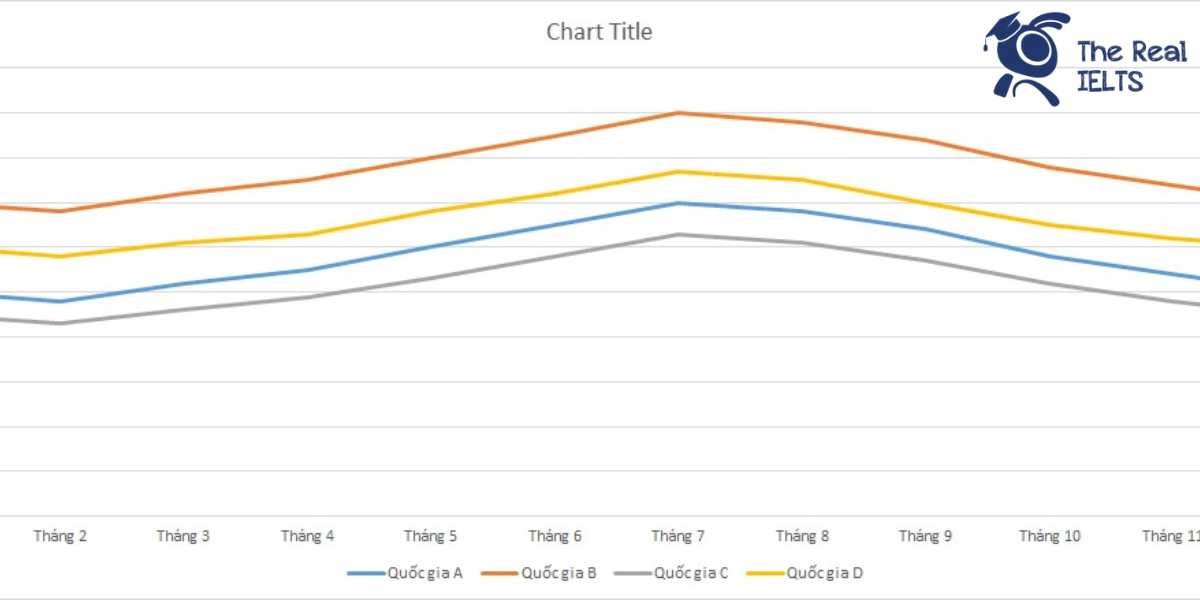Để chinh phục kỳ thi IELTS, kỹ năng đọc hiểu là yếu tố quyết định, đòi hỏi sự chuẩn bị bài bản và chiến lược rõ ràng. IELTS Reading thử thách thí sinh với các văn bản học thuật phức tạp, yêu cầu nắm bắt ý chính, phân tích chi tiết và xử lý từ vựng chuyên sâu trong thời gian hạn chế. Thí sinh từ band 5 đến 8+ cần rèn kỹ năng skimming, scanning và quản lý thời gian để tối ưu hóa điểm số một cách hiệu quả.
Đọc thêm: IELTS ACADEMIC READING TEST 5 – BAND 7.0+
PASSAGE 1: THE INVENTION OF WRITING SYSTEMS
You should spend about 20 minutes on Questions 1–14, which are based on the reading passage below.
Writing is one of the most significant inventions in human history. It allowed information to be recorded, preserved, and transmitted across generations. Unlike spoken language, which evolved naturally, writing systems were deliberately invented.
The earliest known writing system is cuneiform, developed around 3200 BCE in Mesopotamia. It began as pictographs and gradually evolved into wedge-shaped symbols pressed into clay tablets. Initially used for record-keeping—such as inventories and taxes—it later expanded to literature, law, and religion.
Around the same time, hieroglyphs emerged in Ancient Egypt. These combined logographic and alphabetic elements, meaning symbols could represent objects, concepts, or sounds. Hieroglyphs were often carved into stone for religious or monumental purposes.
A major innovation came with the Phoenician alphabet around 1050 BCE. Unlike previous systems that required hundreds of characters, this script had about 22 symbols representing consonant sounds. The Greeks later adapted it by adding vowels, creating the first true alphabet.
Writing systems evolved differently in various parts of the world. In China, characters remained logographic, where each symbol represents a word or idea. In contrast, syllabaries, like the Japanese kana scripts, represent syllables rather than individual sounds or meanings.
Writing did not spread equally. In some societies, such as the Inca Empire, record-keeping was done using quipus—knotted strings used to encode information, though whether this qualifies as writing is debated.
The invention of writing changed how humans organized society, enabled complex administration, and gave rise to historical consciousness. It remains a cornerstone of civilization.
QUESTIONS 1–14
Choose the correct answer A, B, C, or D.
1. What distinguishes writing from spoken language?
A. It evolved naturally
B. It was invented intentionally
C. It has more grammar rules
D. It uses symbols only
2. What was cuneiform originally used for?
A. Religious texts
B. Poetry
C. Record-keeping
D. Political speeches
3. What material was used for writing cuneiform?
A. Wood
B. Papyrus
C. Stone
D. Clay tablets
4. How did hieroglyphs differ from cuneiform?
A. They were only pictorial
B. They combined meaning and sound
C. They used alphabets exclusively
D. They were always written on clay
5. What was significant about the Phoenician alphabet?
A. It represented entire words
B. It was carved into temples
C. It used few symbols for consonants
D. It had over 1,000 characters
6. What major change did the Greeks add to the Phoenician system?
A. Removal of symbols
B. Addition of vowels
C. Use of hieroglyphs
D. Introduction of paper
7. What is a logographic system?
A. One symbol = one sound
B. One symbol = one syllable
C. One symbol = one word or idea
D. No symbols at all
8. What does a syllabary represent?
A. Full paragraphs
B. Emotions
C. Syllables
D. Word endings
9. Which civilization used “quipus”?
A. Egyptian
B. Chinese
C. Greek
D. Inca
10. What is debated about quipus?
A. Their shape
B. Their language
C. Whether they qualify as writing
D. Their religious use
11. What effect did writing have on society?
A. Increased travel
B. Decline of speech
C. Improved artistic skills
D. Enabled administration and record-keeping
12. How is Chinese writing described?
A. Alphabetic
B. Pictorial
C. Logographic
D. Numeric
13. What role did hieroglyphs often serve?
A. Trade agreements
B. Storytelling
C. Monumental and religious use
D. Secret codes
14. The overall tone of the passage is:
A. Biased
B. Critical
C. Informative and historical
D. Humorous
PASSAGE 2: THE ECONOMICS OF HAPPINESS
You should spend about 20 minutes on Questions 15–28, which are based on the reading passage below.
In the past, economic success was measured almost exclusively by Gross Domestic Product (GDP). While GDP provides valuable data about national income, it does not account for many aspects of life that contribute to well-being.
This has led economists and policymakers to explore alternative measures. One of the most prominent is the Gross National Happiness (GNH) index, pioneered by Bhutan in the 1970s. GNH considers factors like mental health, cultural values, environmental sustainability, and community vitality.
Studies in behavioral economics have shown that beyond a certain income threshold, more money does not necessarily lead to more happiness. People may experience a short-term boost in well-being from higher income, but this effect tends to diminish over time due to adaptation and social comparison.
Another key insight is the role of inequality. Research suggests that societies with high income disparity tend to report lower overall life satisfaction, even if average income is high. Feelings of fairness and social cohesion appear to be stronger predictors of happiness than raw wealth.
Economists are also examining the impact of work-life balance, job security, and leisure time on happiness. Countries like the Netherlands and Denmark, where work hours are moderate and vacation time is generous, consistently score high in global happiness rankings.
Critics of GDP-focused models argue that economic growth should be a means to human well-being, not an end in itself. This has prompted calls for “well-being economics”, where success is redefined through quality of life rather than quantity of output.
Although there’s no single metric that perfectly captures happiness, integrating subjective and objective data may offer a more holistic understanding of what makes life meaningful.
QUESTIONS 15–28
Choose the correct answer A, B, C, or D.
15. What is the main limitation of GDP?
A. It’s hard to calculate
B. It excludes well-being factors
C. It’s used only in poor countries
D. It ignores income completely
16. What does Bhutan’s GNH index include?
A. Only financial statistics
B. Military spending
C. Mental health, culture, environment
D. Stock market performance
17. What happens to happiness as income increases past a certain point?
A. It grows exponentially
B. It stops entirely
C. It grows slowly or not at all
D. It becomes unpredictable
18. What reduces the effect of income on happiness over time?
A. Education
B. Adaptation and social comparison
C. Population size
D. Housing prices
19. What is the impact of income inequality?
A. Higher happiness overall
B. Greater economic stability
C. Reduced life satisfaction
D. Increased motivation
20. Which of the following predicts happiness better than income?
A. Internet speed
B. Global ranking
C. Fairness and social cohesion
D. Import-export ratios
21. What work-related factor is linked to happiness?
A. Competition
B. Long working hours
C. Work-life balance
D. Overtime bonuses
22. Why are countries like Denmark and the Netherlands mentioned?
A. They have high inequality
B. They restrict work hours
C. They score high on happiness due to balanced lifestyles
D. They focus on GDP growth
23. What do critics say about GDP-focused models?
A. They encourage war
B. They are accurate but outdated
C. They treat growth as the final goal
D. They ignore exports
24. What is the goal of “well-being economics”?
A. Promote GDP growth
B. Limit social programs
C. Redefine success through quality of life
D. Privatize healthcare
25. What is the author’s view on happiness measurement?
A. It is pointless
B. It should be standardized globally
C. It must mix both subjective and objective data
D. It depends solely on income level
26. What is suggested about economic growth?
A. It automatically brings happiness
B. It is the only way to achieve equality
C. It should support, not override, well-being
D. It should be stopped completely
27. What term describes becoming used to higher income?
A. Economic stagnation
B. Social fatigue
C. Adaptation
D. Opportunity cost
28. The author’s tone is:
A. Persuasive and reflective
B. Sarcastic and critical
C. Indifferent and detached
D. Aggressive and forceful
PASSAGE 3: BIOLUMINESCENCE – NATURE’S LIGHT SHOW
You should spend about 20 minutes on Questions 29–42, which are based on the reading passage below.
Bioluminescence is the production of light by living organisms. It occurs in a wide range of species, from deep-sea creatures and jellyfish to fireflies and some fungi. Unlike human-made light, bioluminescence is cold light, meaning it produces little to no heat.
The light results from a chemical reaction involving a molecule called luciferin and an enzyme called luciferase. When these substances interact with oxygen, light is emitted. The exact structure of luciferin varies between species, which is why the color and intensity of bioluminescence differ.
In the deep ocean, where sunlight cannot reach, bioluminescence is common and plays essential roles. Some organisms use it to attract mates, lure prey, or confuse predators. For example, the anglerfish has a glowing lure that dangles in front of its mouth to trap smaller fish.
On land, fireflies use bioluminescence primarily for mating signals. Each species has its own flashing pattern, allowing individuals to identify suitable partners. In some mushrooms, the light may attract insects that help spread spores.
Scientists are also studying bioluminescence for technological and medical uses. Genes responsible for light production have been inserted into other organisms to create biological markers in genetics research. In medicine, bioluminescent proteins help track tumor growth or infection in real time.
Despite its prevalence, the evolutionary origins of bioluminescence remain unclear. Some researchers believe it began as a byproduct of metabolism, later becoming adaptive. What is clear is that this natural light show continues to inspire science, art, and imagination.
QUESTIONS 29–42
Choose the correct answer A, B, C, or D.
29. What is bioluminescence?
A. Heat-producing light
B. Light from bacteria only
C. Light produced by living organisms
D. Artificial chemical light
30. Why is bioluminescence called “cold light”?
A. It freezes its surroundings
B. It occurs only in winter
C. It emits little to no heat
D. It uses cold water
31. What two substances produce the light?
A. Glucose and protein
B. Water and salt
C. Luciferin and luciferase
D. DNA and RNA
32. Why does bioluminescence vary between species?
A. They eat different foods
B. Their luciferin has different structures
C. They live in different climates
D. They sleep at different times
33. What is one function of deep-sea bioluminescence?
A. Photosynthesis
B. Heat regulation
C. Attracting prey or mates
D. Causing currents
34. What feature does the anglerfish use?
A. Flashing tail
B. Glowing lure
C. Magnetic jaw
D. Camouflaged skin
35. How do fireflies use light?
A. To scare predators
B. To communicate danger
C. For species-specific mating signals
D. To find food
36. What role does light play in glowing fungi?
A. Repels predators
B. Heats spores
C. Attracts insects for spore dispersal
D. Aids in photosynthesis
37. How has science used bioluminescence in research?
A. Creating electricity
B. Cleaning water
C. Tracking biological processes
D. Storing information
38. What is one medical use of bioluminescent proteins?
A. Treating viruses
B. Killing cancer cells
C. Visualizing tumor growth
D. Lowering blood pressure
39. What is unknown about bioluminescence?
A. Whether it produces heat
B. Why some fish avoid it
C. How it evolved
D. Where it occurs
40. What is one theory on its origin?
A. A response to predators
B. A byproduct of metabolism
C. A reaction to sunlight
D. A type of mutation
41. How has bioluminescence inspired humans?
A. Caused fear
B. Influenced religion
C. Inspired science and art
D. Reduced imagination
42. The tone of the author is:
A. Romantic and poetic
B. Critical and dismissive
C. Curious and appreciative
D. Scientific but hostile
ĐÁP ÁN & GIẢI THÍCH – IELTS READING TEST 6
PASSAGE 1: THE INVENTION OF WRITING SYSTEMS
| Câu | Đáp án | Giải thích |
|---|---|---|
| 1 | B | Ngôn ngữ nói tiến hóa tự nhiên, viết là phát minh có chủ đích. |
| 2 | C | Cuneiform ban đầu dùng cho ghi chép sổ sách, thuế vụ. |
| 3 | D | Cuneiform được viết trên bảng đất sét. |
| 4 | B | Hieroglyphs kết hợp biểu ý và biểu âm, khác với cuneiform. |
| 5 | C | Hệ thống chữ Phoenicia có khoảng 22 ký hiệu cho phụ âm. |
| 6 | B | Người Hy Lạp thêm nguyên âm, tạo ra bảng chữ cái hoàn chỉnh đầu tiên. |
| 7 | C | Hệ thống logographic: mỗi ký hiệu đại diện cho một từ/ý tưởng. |
| 8 | C | Syllabary: mỗi ký hiệu biểu thị một âm tiết. |
| 9 | D | Inca sử dụng quipus (dây thắt nút) để ghi nhớ thông tin. |
| 10 | C | Vẫn đang tranh cãi liệu quipus có được tính là hệ thống viết thực sự không. |
| 11 | D | Viết cho phép quản lý phức tạp và lưu giữ thông tin. |
| 12 | C | Chữ Trung Quốc là hệ thống logographic. |
| 13 | C | Hieroglyphs chủ yếu dùng trong tôn giáo và trên công trình lớn. |
| 14 | C | Giọng điệu khách quan, mang tính thông tin và lịch sử. |
PASSAGE 2: THE ECONOMICS OF HAPPINESS
| Câu | Đáp án | Giải thích |
|---|---|---|
| 15 | B | GDP không phản ánh sức khỏe tinh thần, xã hội, môi trường… |
| 16 | C | GNH của Bhutan đo lường sức khỏe tâm thần, văn hóa, môi trường… |
| 17 | C | Sau một ngưỡng thu nhập, tiền nhiều hơn không làm tăng hạnh phúc rõ rệt. |
| 18 | B | Sự thích nghi và so sánh xã hội làm giảm tác động của thu nhập lên hạnh phúc. |
| 19 | C | Chênh lệch giàu nghèo cao làm giảm sự hài lòng với cuộc sống. |
| 20 | C | Các yếu tố như công bằng và gắn kết xã hội dự báo hạnh phúc tốt hơn thu nhập. |
| 21 | C | Cân bằng công việc – cuộc sống có liên quan đến hạnh phúc. |
| 22 | C | Hà Lan & Đan Mạch có lối sống cân bằng, điểm hạnh phúc cao. |
| 23 | C | Phê phán: GDP được xem là đích đến thay vì phương tiện. |
| 24 | C | “Well-being economics” là cách đo lường thành công qua chất lượng sống. |
| 25 | C | Tác giả ủng hộ kết hợp dữ liệu chủ quan & khách quan để đo hạnh phúc. |
| 26 | C | Tăng trưởng kinh tế nên phục vụ con người, không phải mục tiêu tự thân. |
| 27 | C | Adaptation = con người quen với mức sống cao nên mức hạnh phúc giảm dần. |
| 28 | A | Giọng điệu phân tích, có xu hướng thuyết phục và phản ánh xã hội hiện đại. |
PASSAGE 3: BIOLUMINESCENCE
| Câu | Đáp án | Giải thích |
|---|---|---|
| 29 | C | Bioluminescence là ánh sáng do sinh vật sống tạo ra. |
| 30 | C | “Cold light” nghĩa là ánh sáng không sinh nhiệt đáng kể. |
| 31 | C | Ánh sáng do phản ứng của luciferin + luciferase + oxy. |
| 32 | B | Cấu trúc luciferin khác nhau giữa các loài → ánh sáng khác nhau. |
| 33 | C | Ở biển sâu, bioluminescence dùng để thu hút bạn tình, con mồi hoặc gây nhiễu. |
| 34 | B | Anglerfish có dụng cụ phát sáng trước miệng để dụ mồi. |
| 35 | C | Fireflies phát tín hiệu ánh sáng để thu hút bạn tình đúng loài. |
| 36 | C | Nấm phát sáng thu hút côn trùng giúp phát tán bào tử. |
| 37 | C | Bioluminescence giúp theo dõi quá trình sinh học (gene, tế bào). |
| 38 | C | Trong y học, dùng protein phát quang để quan sát khối u hoặc nhiễm trùng. |
| 39 | C | Nguồn gốc tiến hóa của bioluminescence vẫn chưa rõ ràng. |
| 40 | B | Một giả thuyết: ban đầu là sản phẩm phụ của chuyển hóa năng lượng. |
| 41 | C | Ánh sáng tự nhiên này truyền cảm hứng cho khoa học và nghệ thuật. |
| 42 | C | Giọng điệu khoa học, tò mò, thể hiện sự trân trọng trước hiện tượng thiên nhiên. |















